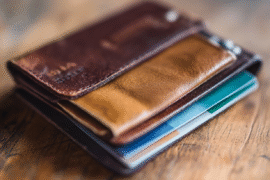Even though cash is still one of the most common options for paying for goods and services, many of today’s consumers now prefer using payment cards. These financial products enable users to complete their transactions through a cashless process, offering a more convenient and secure way to make purchases both in-store and online. Aside from this, payment cards can also be an effective tool for improving one’s financial health. When used responsibly, they can aid in developing good financial habits that allow better budget management, which can then lead to long-term financial stability.
There are different types of payment cards, but the three most common are debit cards, prepaid cards, and credit cards. Though these may look the same, each one offers unique advantages and that can enhance your financial well-being. Knowing how they work can help you make more informed decisions and maximize their respective benefits. Here’s a closer look at each of these payment cards and their unique features to help you understand which one is best suited for your financial needs and lifestyle.
Debit Cards
Debit cards are linked directly to a checking or savings account. When used for a purchase, the funds are withdrawn immediately from the account, allowing for seamless transactions. These payment cards are typically issued by banks, debit card companies, and even fintech companies. They also come with ATM access, online banking, and mobile payment capabilities.
You can use a debit card for various transactions, both in-person and online. At a retail store, for instance, you can simply swipe or insert the card at the point of sale (POS) device to pay for goods and services. For online purchases, on the other hand, you can enter the card number, expiration date, and security code to make a payment. One of the best reasons to use debit cards is that they eliminate the risk of overspending. The “credit limit” is only what’s available in your account, so you won’t be able to spend more than what you can. Additionally, debit cards typically have lower fees compared to credit cards and don’t incur interest charges because there’s no debt involved.
Prepaid Cards
Prepaid cards are a versatile payment option that functions similarly to debit and credit cards but with one key difference: they’re not linked to a bank account. Instead, you load a specific amount of money onto the card in advance, which can then be used until the balance reaches zero. Once the balance runs low, you can reload the card at various retail locations, through online platforms, or via bank transfer, depending on the card’s features.
Prepaid cards are available from various financial institutions. For instance, Maya—the number one digital bank in the Philippines—has the Maya Visa card. You can order this payment card and top up your savings account via the Maya app. This card can be used wherever major credit cards are accepted and can also be treated as a debit card in certain situations.
One of the main advantages of using a prepaid card is that it can help you control your spending habits better. Like a debit card, you can only spend what is loaded onto the card, so there’s no risk of incurring debt or overdraft fees. Moreover, a prepaid card is often easier to obtain than a credit card because you don’t need to pass a credit check or submit other stringent documentary requirements. As such, this card is an excellent option if you don’t have or want to open an additional account from a traditional bank.
Credit Cards
Credit cards allow users to borrow money from a lender, typically a bank, to make purchases or withdraw cash up to a predetermined limit. When a credit card is used, the issuer pays the merchant on behalf of the cardholder, who is then responsible for repaying the issuer. The billing cycle is usually set on a monthly basis and if the full amount isn’t paid by the due date, interest charges may apply.
Like debit and prepaid cards, a credit card can be used for a wide variety of purchases, both online and in-store. However, unlike the other two, this payment card typically offers the option to pay for purchases over time, allowing users to carry a balance. Another primary advantage of having a credit card is it gives you the ability to build a good credit history faster. As long as you use your credit card responsibly—such as by making timely payments and maintaining a low credit utilization ratio—can significantly improve your credit score, making it easier to secure lower-interest loans or higher credit limits in the future.
Additionally, credit cards often provide additional perks, such as extended warranties on purchases, travel insurance, and fraud protection, which can enhance consumer confidence. They also offer attractive rewards programs that provide users with points, miles, or cash back for every certain amount of money spent.
Debit cards, prepaid cards, and credit cards each serve distinct purposes, offering unique advantages based on how you manage and access your money. With a better understanding of how these three payment cards work, you can maximize their benefits to improve your financial health.
Become an Insider

Subscribe to get a free daily budget planner printable to help get your money on track!
Make passive money the right way. No spam.
Source Citation References:
+ Inspo












































